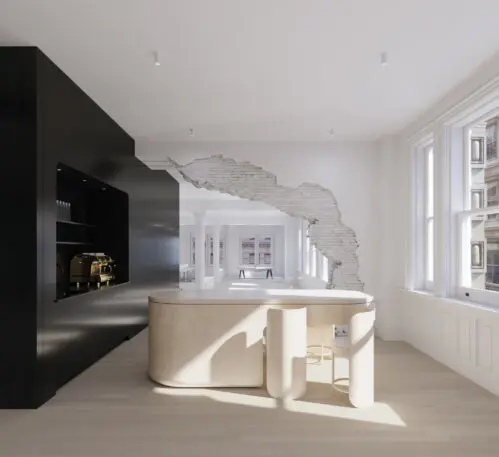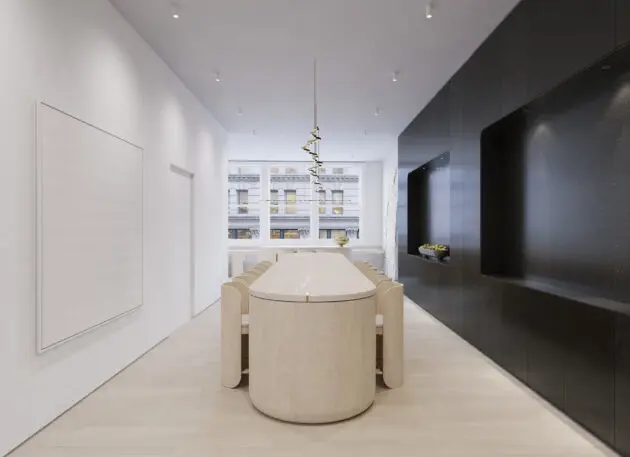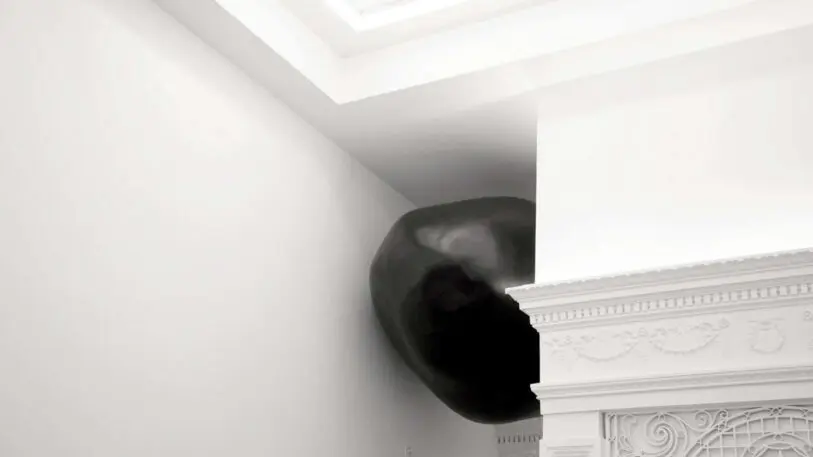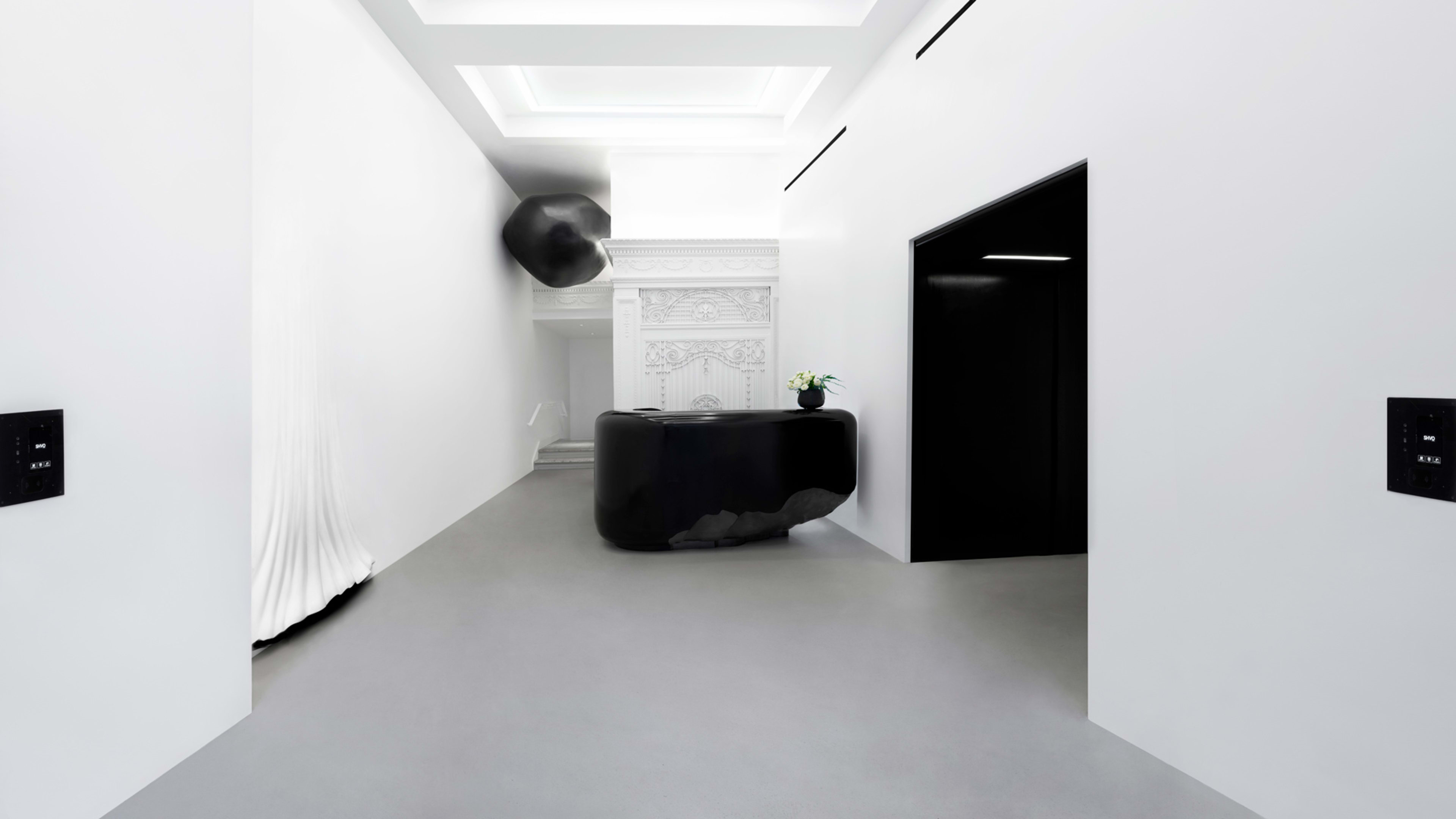A glossy black boulder sitting on the floor. A giant rock, also black, suspended right beneath the ceiling. And a white curtain that looks like it’s gently billowing under an invisible breeze but is, in fact, forever cast in plaster. Welcome to the lobby of 530 Broadway, a Beaux Arts building in Manhattan that looks like an art gallery but works like an office.

The mismatch isn’t all that surprising when you learn the office is the work of Snarkitecture, a New York-based design studio much better known for its highly instagrammable installations and whimsical retail spaces. In fact, 530 Broadway is the studio’s first office.

“I never thought we’d design an office because I don’t think I ever wanted to design an office, but this was right time to do it, and it was the right project to do it with,” says Alex Mustonen, a cofounder and partner of Snarkitecture, who worked with New York developer Shvo on the project. By “right time,” Mustonen is referring to the great remote-work experiment, and how it has redefined the meaning of the office. “We recognize that working spaces are important, and of course you want those to be functional, to have a certain level of comfort to them, but that’s not really what you’re coming in there for,” he says.

Aptly titled Art/Work, Snarkitecture’s intervention spans three floors and the lobby. As Mustonen puts it, the hallways have a certain “weight” to them and are mostly clad in black steel. By contrast, the workspaces are mostly bright and airy, with hardwood floors, custom furniture, and a striking bathroom, which, like the reception desk, is dressed in warm travertine stone.

In the lounge, Snarkitecture has stripped the walls to expose an underlying layer of brick, painted white. In the café, they demolished parts of another brick wall, leaving a jagged outline that probably defies building code regulations but results in a look that can best be described as grunge-chic. The overall approach is a marked departure from the “resimercial design” trend that’s been sweeping across the workplace: no plush sofas, no cosy vibes, practically no colors. Instead, Starkitecture has created an almost monochrome provocation in the shape of an office, hoping it will stand out in a world that’s awash in warm woods and biophilic design.

Art/Work is part of a much broader effort to attract tenants back to the office, which includes wild amenities like a 24-ton sculpture by Alicja Kwade, an 18-hole mini golf course, and a bar. In this case, the tenant isn’t even confirmed, but the team has a pretty good sense of their audience: the Soho creative industry.

According to CBRE, the office vacancy rate reached 17.1% last year. Cities like Portland, San Francisco, and Seattle are among the worst off, but New York and Washington, D.C., have also been struggling (and scrambling to turn more offices into homes). It’s no surprise, then, that office landlords are pulling all the stops to stay in the race.

“The reason that I approached Alex and Daniel [Arsham] to do this was because I wanted somebody who didn’t design offices, somebody who isn’t set in these old-school parameters and really understands the mindset of the creative industry,” says Shvo’s founder Michael Shvo, noting the building is already home to the ad agency Anomaly. “The brain works in a very different way when you haven’t done this a thousand times.”
Recognize your brand’s excellence by applying to this year’s Brands That Matter Awards before the early-rate deadline, May 3.
